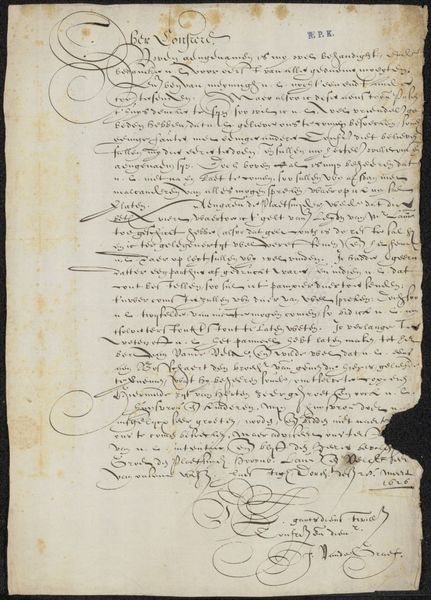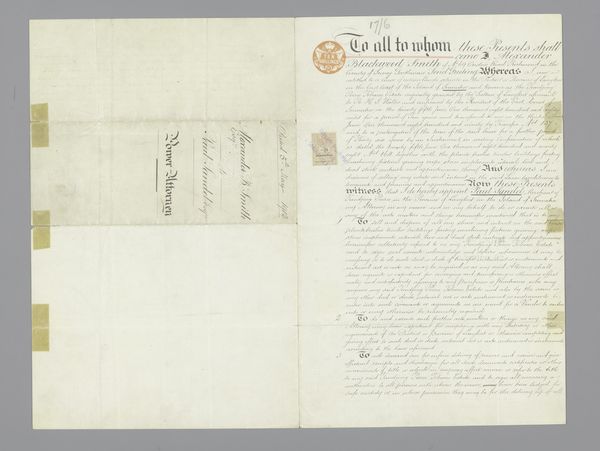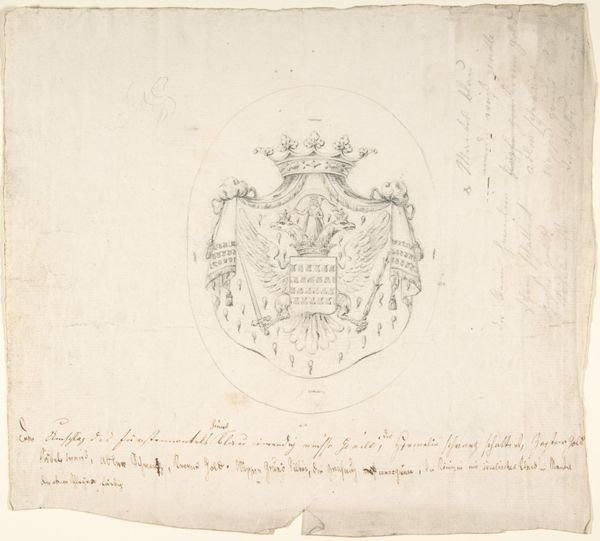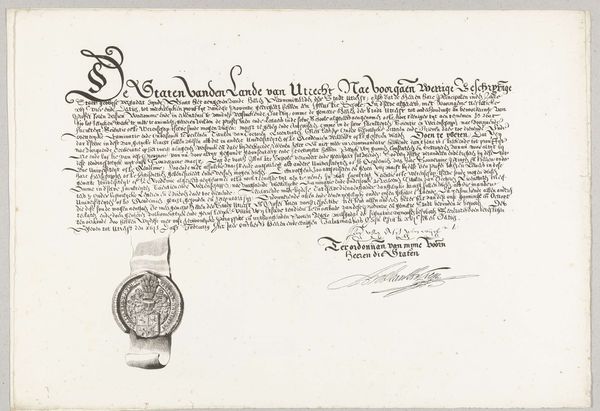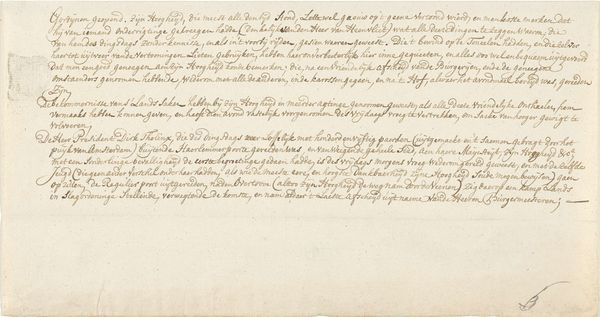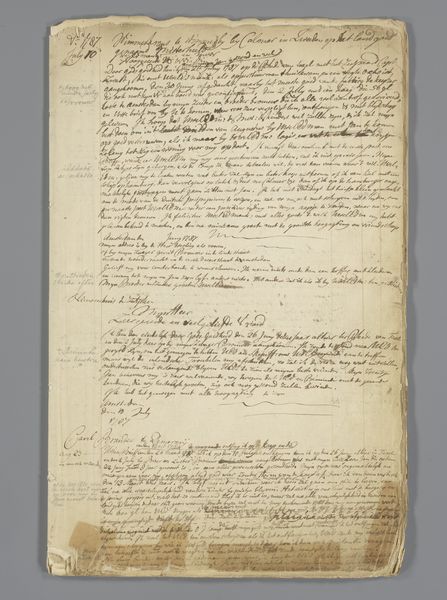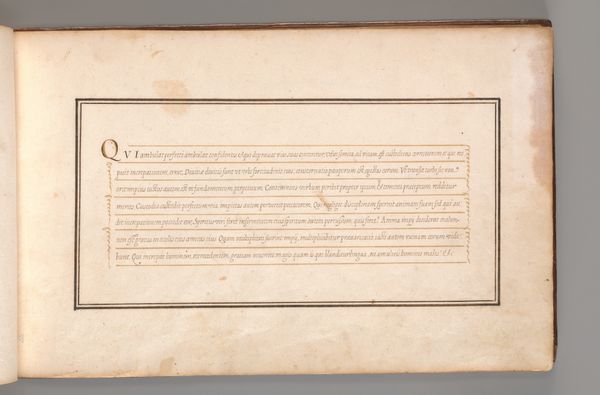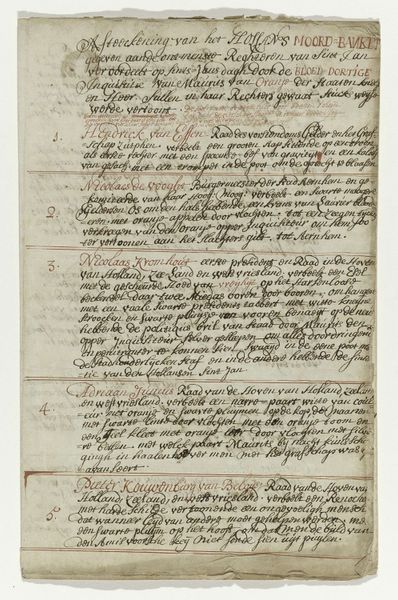
Diploma waarbij Lodewijk XIV Cornelis Lampsins verhief tot baron van Tobago en ridder van de Orde van St. Michel 1662 - 1668
0:00
0:00
paper, ink
#
medieval
#
baroque
#
paper
#
ink
#
history-painting
#
calligraphy
Dimensions: height 52.5 cm, width 64.5 cm
Copyright: Rijks Museum: Open Domain
Curator: Before us we have a remarkable artifact: a diploma issued sometime between 1662 and 1668, bestowing upon Cornelis Lampsins the title of Baron of Tobago and Knight of the Order of St. Michael by Louis XIV. It's rendered in ink on paper. Editor: Intricate! At first glance, it presents itself as a composition in organized chaos; dense calligraphic lines juxtaposed with heraldic imagery. The script, although illegible to modern eyes, adds an immediate sense of texture and history. Curator: The formal qualities reflect the era's penchant for ornate detail and symbolic display. Notice the deliberate arrangement of text blocks around the central crest, typical of Baroque sensibilities. Consider, too, the physical document as testament of royal power. Editor: Absolutely. It exemplifies the evolving relationship between monarchy and merchant classes in that period. It documents the complex power dynamics associated with France's colonial aspirations, reflected in conferring titles linked to places like Tobago. How the document functioned in legitimizing that overseas ambition! Curator: Precisely. One may argue, through structuralist thought, that each element functions as a signifier; the calligraphic flourish indicates prestige, the seal denotes authenticity, and the very paper symbolizes enduring authority. It presents, even fetishizes, Louis XIV’s centralized power. Editor: Yet it goes further, providing crucial data points. What specific actions by Lampsins earned this royal favor? Who in Louis's court was tasked with deciding who to patronize? Furthermore, where did it sit--was it prominently displayed or secreted in some personal archive? The political intent must also be analyzed. Curator: Good points. And consider how the design itself reinforces hierarchy, framing royal decrees within elaborate decorative elements. Note, though, how that aesthetic program creates both immediacy and distance simultaneously. We're given privileged access, yet remain fundamentally excluded from the original, intimate act. Editor: A physical reminder, if you will, of how statecraft involved pageantry as much as paperwork! Thanks to that juxtaposition we see this era both believed in such performance and knew it must invest in tangible means of representation. What stories are hiding here. Curator: It indeed presents layered inquiries--about visual aesthetics and socio-political contexts. Each component operates at once to obfuscate and illuminate, revealing how complex are claims to royal power. Editor: Indeed; it's a stunning convergence, or rather divergence, of artistry, politics and empire – perfectly captured on a single page.
Comments
No comments
Be the first to comment and join the conversation on the ultimate creative platform.
